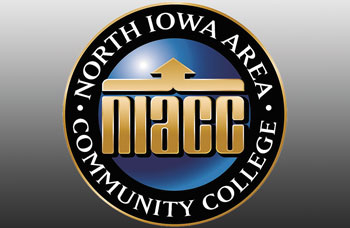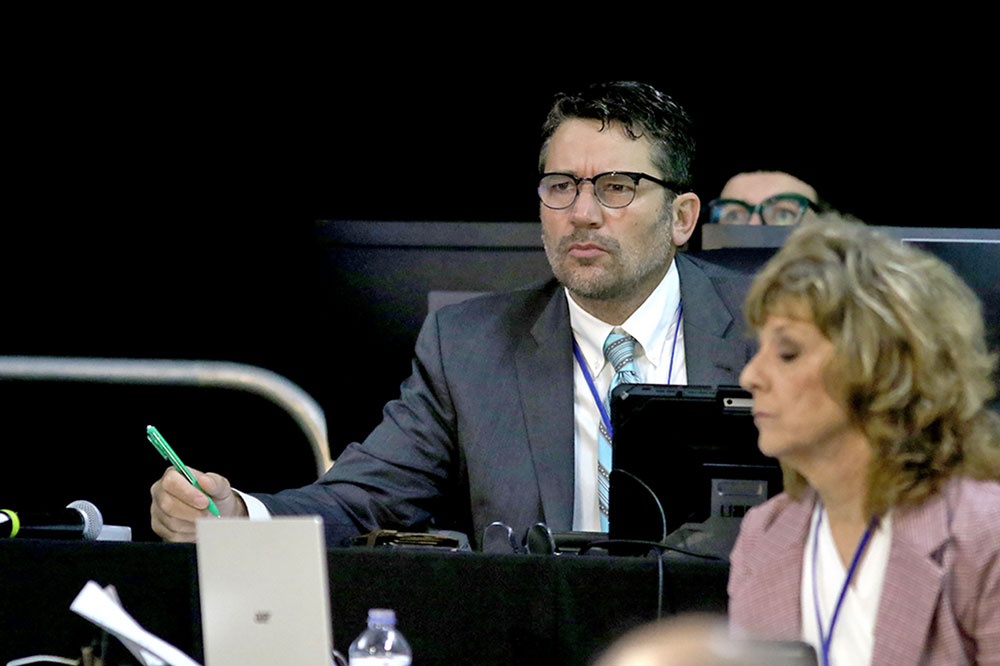Charles City superintendent explains budget reduction and enrollment trends over cookies and coffee

By Travis Fischer, tkfischer@charlescitypress.com
Charles City Schools Superintendent Dr. Anne Lundquist explained the whys and hows behind plans for a $900,000 budget reduction during an informal discussion over cookies and coffee on Thursday, March 7.
Featuring a spread of baked treats including Snickerdoodles, chocolate chip, M&Ms, white chocolate macadamia, and oatmeal raisin cookies, the school administrator offered insight into how the district is working to improve its financial situation without cutting programming or staff.
“It’s not the end of the world, but it could be if we ignore it,” said Lundquist.
Earlier this week, the school board presented an initial proposal to reduce district expenses as its projected revenues for the 2024-25 school year fall short of projected expenditures by $1.37 million.
One of the biggest drivers of the budget shortfall is a higher than anticipated loss of students in the district. Certified enrollment for the district this year is down 20 students and while student populations have been trending downward statewide, this year’s loss is greater than the nine student reduction projected.
Exasperating the matter is an unprecedented imbalance to the ratio of students open-enrolling out to open-enrolling in. Over the last 20 years, Charles City has historically maintained a relatively balanced ratio of students enrolling in or out of the district. This year, while 49 students have open-enrolled into the district, 83 have enrolled out, creating a 34-student deficit that has effectively cost the school more than a quarter-million dollars in state general fund revenue.
As things stand today, the district is anticipating going into the next school year with a negative in “new money,” forcing it to figure out how offer the same services with less funding.
“Zero programs have been cut since I’ve been here,” said Lundquist, who is overseeing a second consecutive year of budget reductions. “We’re just tightening our belt.”
A major component of the budget reduction plan is changes to the employee health insurance policy, bringing down district contributions, allowing staff more flexibility to opt-out of the district’s plan if they have a spouse, and eliminating the expense of stipends and other practices. These changes are projected to create a savings of more than $300,000 for the year.
Other changes impacting employees are the reduction of working hours and contracted days for summer school staff, para-educators, secretaries, teacher leadership, and administrative support.
Outside of staff changes, the district also plans to eliminate two of the three afternoon shuttle buses, bringing the shuttles down to a single morning and afternoon.
The certified nursing assistant (CNA) program will be discontinued at the school as students will be able to access it through the Regional Career Center’s Health Science Academy, and $175,000 will be reallocated out of the Talented and Gifted Program to go toward salary expenses.
On the other end of the budget, the district is also projecting a property tax increase, bringing the levy up from $12.93 to $13.38 per $1,000 of assessed taxable valuation.
This increase is needed to balance the special education deficit, which is running at a deficit of $1.2 million. Charles City currently serves 256 students with Individual Education Plans, 17.8% of the total student population, and while these students do get additional weighted funding from the state, that funding has not kept up with the cost of providing for those special education needs, school officials say.
It was noted that the budget reduction plan is still in its early stages and nothing has been set in stone yet. Some factors may change the district’s financial outlook.
For example, the budget is being made under the assumption that the state will approve a 2.5% increase in Supplemental State Aid, the per-pupil funding that the state provides to school districts. At 2.5%, this amounts to $280,579 for the district. However, the Iowa House of Representatives has approved a 3% increase, which would bring in an additional $56,000 in revenue if Gov. Kim Reynolds agrees to sign the bill.
Outside of school funding, Lundquist also discussed student retention, talking with parents about the reasons open-enrollments have spiked in the district, what is being done to reverse that trend, and what else can be done to keep students in Charles City.
“I appreciate you opening up and your openness to have people come talk to you,” said Julie Mayhew, a district parent who engaged in the chat.








Social Share